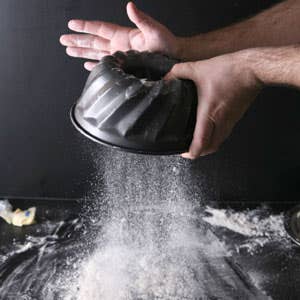
Baking Techniques
While making the tortes and cookies for our story Vienna's Sweet Empire (Issue 118, March 2009), we used a few techniques that are helpful for any home baker to know. The three tricks below will produce sophisticated results with minimal effort in a multitude of desserts.
To create beautiful chocolate shavings for garnishing such elaborate desserts as Demel's truffeltorte, it's best to start with a large block of chocolate at room temperature. If it's too cold, the shavings will shatter; too warm, and the shavings will be too weak to hold their shape. The best way to ensure perfect chocolate shavings is to hold the surface of the chocolate in the palm of your hand for one minute to let it warm slightly. Then, using a vegetable peeler, press firmly on the chocolate block in a slow, sweeping motion so that the shaving curls onto itself. Repeat until you have enough curls to cover the cake. Refrigerate curls as necessary to help them keep their shape.
Before vanilla extract became a popular ingredient in cakes and confections, about a hundred years ago, pastry chefs like those at Demel employed the actual beans of the tropical vanilla orchid. The beans are infused into cream or milk for custards, like the pastry cream filling for Demel's russische punschtorte, giving them a dose of otherworldly floral flavor. Split the vanilla bean in half lengthwise from tip to tip with a paring knife. Pressing the tip of one bean half with your finger on a work surface, slowly scrape the back side of the knife blade along the pod to remove the tiny beans. Repeat with the other half.
When it comes to removing baked goods from their containers, buttering and flouring the pan—an instruction often found in baking recipes—is the most reliable route to take. Simply spread a thin film of room-temperature butter on the inside of a baking pan, and then add a few spoonfuls of flour. Rotate the pan around and back and forth until the flour has covered the entire surface; then knock the excess flour out with a forceful tap on the bottom of the overturned pan. Steam allows foods to release themselves from baking pans: the butter melts quickly in the oven, releasing steam from the water in it, and makes an air pocket around the baked goods. The layer of flour keeps the melted butter from integrating into the batter while the dish is baking. And because the butter and flour are never mixed together, they stay separate, even in their thin states. For intricate molds like the one for gugelhupf used in Demel's marmorgugelhupf, it's the only technique that will guarantee flawless results.
Keep Reading
Continue to Next Story










